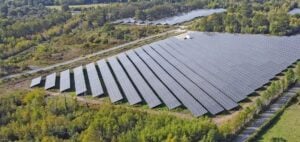Investment bank Natixis has recently played a key role in financing three solar projects in the United States. As the principal Bookrunner, it facilitated the fundraising for MN8 Energy, a company specializing in renewable energy. The facilities are located in North Carolina, Kentucky, and Illinois, strategic regions for renewable energy development in the U.S.
Location and Objectives of the Projects
The first installation is located in North Carolina, a state known for its supportive policies toward solar projects. Financing this installation is crucial to meeting the state’s renewable energy production targets. The second project, located in Kentucky, is part of a plan to increase the share of renewable energy in the region while creating new economic opportunities. Finally, the installation in Illinois is designed to strengthen the state’s energy infrastructure, supporting its transition to a greener economy.
Investment and Sector Development
These three projects represent a significant investment in solar energy, a rapidly expanding sector in the United States. MN8 Energy, supported by Natixis, is committed to diversifying its energy portfolio and actively participating in the increase of solar production capacity in these states. This initiative follows a growing trend of financing solar projects, particularly in states like North Carolina and Illinois, which benefit from favorable regulations and subsidies for renewable energy.
Financing and Impact on the Energy Market
The financing of these solar projects comes amid increasing investments in renewable energy in the U.S. These investments aim to meet the rising demand for clean energy while supporting state and federal environmental policies. Natixis’ role as the principal Bookrunner highlights the importance of financial players in the renewable energy sector, facilitating access to capital necessary for the development of these infrastructures.
The impact of these financings extends beyond energy production. They also contribute to local job creation, the development of new technologies, and the improvement of energy independence in the concerned states. This momentum could encourage other companies to follow this example, further stimulating investment in renewable energy projects.
##






















